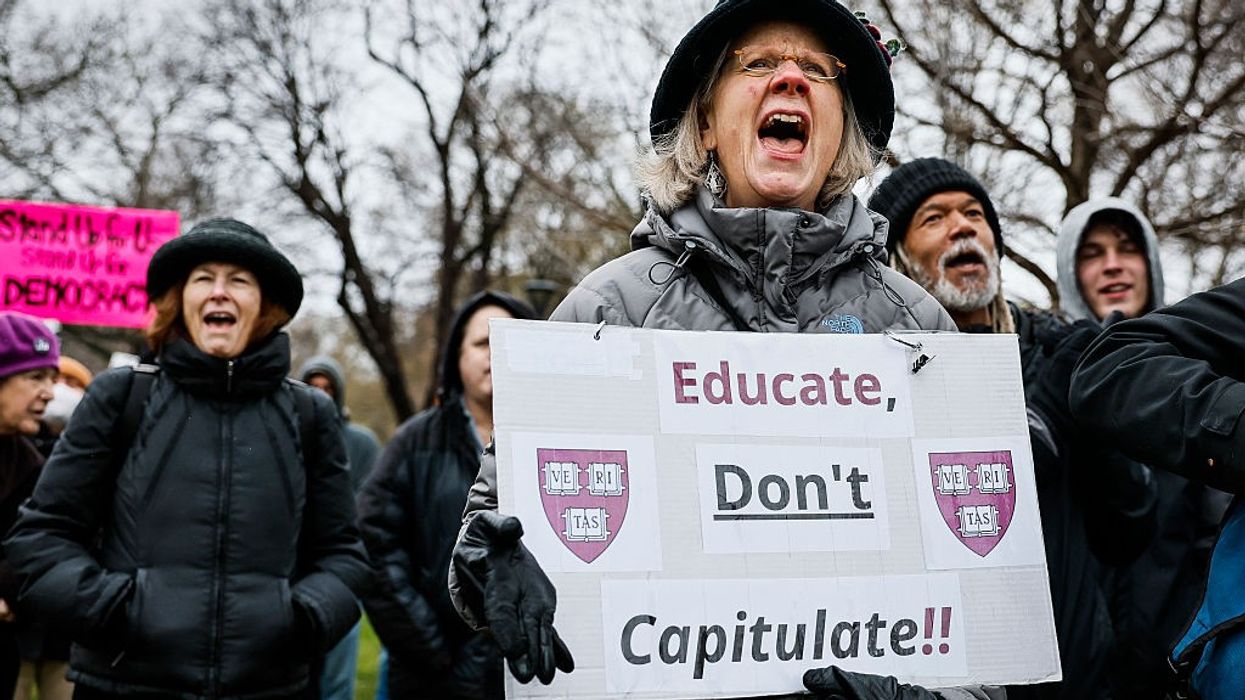JD Vance Is Wrong: DEI Is Not What’s Dividing America—He Is
In the America that Vance envisions, people are only judged for "who they are"—unless they’re immigrants, transgender, women, Muslims, or people of color.
On December 21, at Turning Point USA’s annual national conference, Vice President JD Vance took to the stage to denounce the evils of diversity, equity, and inclusion initiatives.
He told the crowd:
We don’t treat anybody different because of their race or their sex, so we have relegated DEI to the dustbin of history, which is exactly where it had belonged. In the United States of America, you don’t have to apologize for being white anymore. And if you’re an Asian, you don’t have to talk around your skin color when you’re applying for college. Because we judge people based on who they are, not on ethnicity and things they can’t control. We don’t persecute you for being male, for being straight, for being gay, for being anything. The only thing that we demand is that you be a great American patriot. And if you’re that, you’re very much on our team.
For Vance, DEI and affirmative action policies are so vile that it “pisses [him] off a million times more” than racial slurs aimed at his own children by an actual white supremacist.
This is because DEI policies, in his view, are specifically designed to harm white men. On December 17, Vance posted on Twitter that, “A lot of people think ‘DEI’ is lame diversity seminars or racial slogans at NFL games. In reality, it was a deliberate program of discrimination against white men. This is an incredible piece that describes the evil of DEI and its consequences.”
The “incredible piece” is an article by Jacob Savage entitled “The Lost Generation.” Savage argues that “DEI wasn’t a gentle rebalancing—it was a profound shift in how power and prestige were distributed.” A redistribution that, Savage argues, harmed “white male millennials” who saw opportunities that would have ordinarily gone to people like him go to people of color and women instead. Savage’s grievance is premised on the assumption that the people who succeed in his place were less qualified—the type of people that he would have triumphed over if not for DEI.
Much of the article is typical anti-DEI rhetoric. But, toward the end, Savage makes the following—almost insightful—point:
It’s strange and more than a little poisonous to see yourself buffeted by forces beyond your control. But there’s also a comfort in it. Because it’s less painful to scroll through other people’s IMDb pages late at night, figuring out what shortcut—race, gender, connections—they took to success, than to grapple with the fact that there are white men my age who’ve succeeded, and I am not one of them. I could have worked harder, I could have networked better, I could have been better. The truth is, I’m not some extraordinary talent who was passed over; I’m an ordinary talent—and in ordinary times that would have been enough.
Savage, like Vance and most anti-DEI advocates, champions “American meritocracy.” Yet, he is somehow upset and surprised that someone with “ordinary talent” failed to succeed. Isn’t this outcome exactly what true, unfettered meritocracy would produce? If everyone, regardless of race, sex, and gender, were able to compete equally, then those who are not “extraordinary” would always struggle to find financial security and success.
The actual problem that Savage is unknowingly pointing to is not DEI. It’s capitalism. Within a capitalist system that prioritizes maximizing profits over people’s well-being, and a political system that offers little to no protection for those capitalism leaves behind, most people will struggle to survive. That is by design.
Capitalism will always, by its very nature, produce “winners” and “losers.” The more people there are competing for a steadily decreasing number of jobs, the more “losers” there will be. A problem that AI—aided by the Trump administration’s effort to eliminate any regulations against it—will likely worsen in the coming years. The only real “winners” in this dynamic are the ultra-wealthy class who continue to succeed regardless of their own individual talents.
He is evoking racial animosity to distract his supporters from the real problems that capitalism is generating and that the Trump administration is ignoring.
If Vance really cared about treating people equally and with dignity, then he would concern himself with tackling the affordability crisis, increasing wages, lowering healthcare costs, building more social safety nets—all issues that the Trump administration is currently failing to address. Worse even, this administration is actively working to undermine many of the programs that would help people like Savage who are struggling to get by.
No matter what Vance says, being “a great American patriot” will never be enough to succeed within the current capitalist system. And Vance knows this. In Hillbilly Elegy, Vance discusses the significance of “social capital,” or leveraging the networks of people and institutions around us to “connect us to the right people, ensure that we have opportunities, and impart valuable information.” For Vance, his social capital, which included Yale professors, tech billionaires, and former presidential speechwriters, was critical to his success. However, that capital is reserved for the upper class. As he writes, “Those who tap into it and use it prosper. Those who don’t are running life’s race with a major handicap. This is a serious problem for kids like me.”
Ultimately, Vance is not concerned with equality or discrimination. His attacks on DEI are nothing more than a smokescreen. He is evoking racial animosity to distract his supporters from the real problems that capitalism is generating and that the Trump administration is ignoring. He is hoping to exploit people’s genuine frustrations with the status quo to become president in 2028.
Vance preaches inclusivity, but his entire social and political ideology is divisive. He claims that, “We all got wrapped up over the last few years in zero sum thinking. This was because the people who think they rule the world pit us against one another.” But the reality is that Vance’s pro-capitalist, Christian nationalist, and ethnonationalist values are all zero sum ways of thinking that function precisely to divide people.
Vance says that “in the United States of America, you don’t have to apologize for being white anymore.” Yet, white people have never had to apologize for being white. This is performative anger. Vance is using the same rhetoric still used by the KKK—“Never! Never! Apologize for Being White!—to fuel hatred and contempt for his own political gain.
In the America that Vance envisions, people are only judged for “who they are”—unless they’re immigrants, transgender, women, Muslims, or people of color. Within the very same speech that Vance champions equality for all, he attacks Somali Americans. He tells the audience that “Democrats are not sending their best. Omar Fateh was Ilhan Omar’s candidate for mayor of Mogadishu. Wait, I mean Minneapolis. Little Freudian slip there”—smiling as the crowd laughed along.
As one of his former friends puts it, Vance is a “chameleon. Someone who is able to change their positions and their values depending on what will amass them political power and wealth. And I think that’s really unfortunate, because it reflects a lack of integrity.” His drastic change of heart about Trump is proof of how easily he can change his colors. Vance went from Trump is “America’s Hitler” to now serving as his vice president within the span of a few years. His anti-DEI rhetoric is just another political maneuver meant to serve his own interest.
All that said, Vance is right about one thing—“The people who think they rule the world pit us against one another.” Those people include him. We can’t let him succeed.


